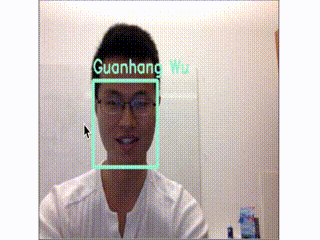2.2 KiB
Demo 1: Real-Time Web Demo
See our YouTube video of using this in a real-time web application for face recognition. The source is available in demos/web. The browser portions have been tested on Google Chrome 46 in OSX.
This demo does the full face recognition pipeline on every frame. In practice, object tracking like dlib's should be used once the face recognizer has predicted a face.
To run on your system, first follow the Setup Guide and make sure you can run a simpler demo, like the comparison demo.
Next, install the requirements for the web demo with
./install-deps.sh and sudo pip install -r requirements.txt
from the demos/web directory.
This is currently not included in the Docker container.
The application is split into a processing server and static
web pages that communicate via web sockets.
Start the server with ./demos/web/server.py.
With your client system with webcam and browser,
you should now be able to send a request to the websocket
connection with curl your-server:9000 (localhost:9000 if running on your machine),
which should inform you that it's' a WebSocket endpoint and not a web server.
Please check routing between your client and server if you
get connection refused issues.
If you are running the server remotely (relative to your browser)
or in a Docker container,
change the WebSocket connection in
index.html
from 127.0.0.1 to the IP address of your server
that you were able to connect to with curl.
With the WebSocket server running, serve the static website with
python2 -m SimpleHTTPServer 8000 from the /demos/web directory.
You should now be able to access the demo from your browser
at http://your-server:8000, (http://localhost:8000 if running on your machine),
The saved faces are only available for the browser session.
